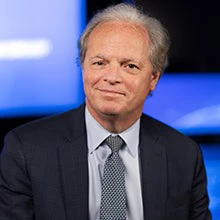 A father and son playing at the wind turbines generating electricity. Credit: Arkom Suvarnasiri/Shutterstock.com
A father and son playing at the wind turbines generating electricity. Credit: Arkom Suvarnasiri/Shutterstock.com
The upcoming Summit for a New Global Financing Pact will bring together global leaders to look at how international financing can bring solutions to countries facing mounting crises from climate change to poverty and pandemics. This is an opportune time to focus on how international finance can jumpstart the clean energy transition, especially for the countries most vulnerable to climate change.
The world is on the cusp of a monumental transition to clean energies that will fundamentally change our lives for the better. However, barriers are paralyzing the developing world’s access to renewables because they cannot afford high up-front costs nor obtain enough low-cost financing.
Low- and middle-income countries currently receive only one-fifth of global energy investment despite accounting for two-thirds of the global population. Without the means to fund an energy transition, developing countries often pay more for electricity; cannot access clean energy projects; and are locked into fossil fuel projects with high and volatile variable costs – a triple penalty for energy transition. In essence, the poverty trap is becoming an energy trap that is becoming a climate trap.
While renewables such as solar and wind provide the least expensive electricity, the upfront costs for clean energy infrastructure are considerable. Installing enough renewable energy capacity to provide the same output as fossil fuel-based generation in developing countries can cost two to three times more. Financing this initial cost can raise the price tag of decarbonizing power systems by over 30 percent due to high cost of capital in poor countries.
With an estimated $1 trillion a year in energy investments needed throughout the developing world to meet climate goals, effectively mobilizing private capital is essential. As part of the World Bank’s new approach to mobilizing private capital, we aim to lead a global effort to mobilize private investment for the clean energy transition. The World Bank Group evolution roadmap will allow us to take a larger role in global climate goals. Clean energy transition is at the heart of the solution.
Scaling up renewables to phase down coal powered generation is key to meeting climate goals. How do we get there? The World Bank’s recently launched Scaling Up to Phase Down paper outlines a six-step virtuous cycle for catalyzing clean energy transformation in developing countries. The first step is governments taking the lead and setting ambitious policy targets for the clean energy transition. A strong political commitment to decarbonization strategies and implementation plans reduces risks for investors. At the same time, strengthening power sector institutions is needed to mitigate investor risk.
Fossil-fuel infrastructure can be hard to break free from. For example, coal is one of the dirtiest fuels used for power generation, yet there are still over 2,100 GW of coal fired power plants worldwide. In order to reach net zero emissions by mid-century, we would need to decommission over 100 GW per year, or 300MW of coal-fired generation per day—comparable to decommissioning one coal generator unit per day for the next 20 to 25 years. Currently the world is headed in the opposite direction, increasing net coal-fired generation, and this needs to change immediately.
Countries need to have a strong framework for power sector transition. Coal can only phase down if energy access is secured through other sources. For this to happen countries must be ready to integrate more renewables, increase energy efficiency, and direct private and public capital towards a pipeline of clean energy projects. Without this solid foundation, capital can be squandered, and investors will continue to be hesitant.
Multilateral development banks and donors play a critical role in scaling up support for developing countries with more affordable financing at each stage of this energy transition. The higher the hurdle, the more concessional support is needed. Once governments strengthen energy sector fundamentals, and concessional finance catalyzes the transition, the private sector will be ready to invest at scale in clean energy in developing countries.
We all have a role to play to support governments to lay the foundations for a virtuous cycle where results in renewable energy can strengthen energy security, energy affordability, and job creation – which in turn will strengthen long-term political commitment, further propelling the energy transformation.
Developing countries cannot overcome the hurdles to energy transition alone. The world needs to come together to catalyze affordable finance to unleash the power of renewable energy to reduce emissions, strengthen economies and unlock clean energy for all.


Join the Conversation